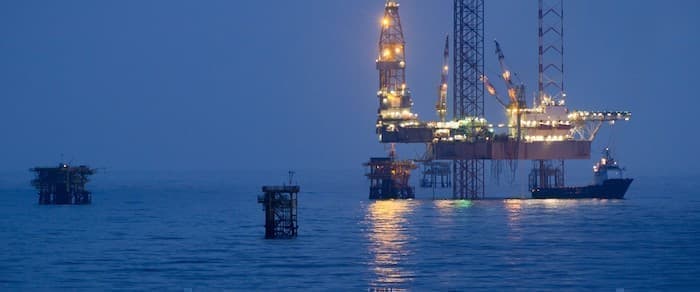As the latest strong storm that passed through the U.S. Gulf of Mexico showed, hurricanes are testing the resilience of offshore oil and gas facilities and pipelines. Hurricane Ida made headlines as it left 1 million customers in the state of Louisiana without power and shut-in as much as 95 percent of the U.S. Gulf of Mexico's oil production just before making landfall in Louisiana on August 29.
Unfortunately, the continued disruption to oil and gas production in the Gulf of Mexico was not the only headline-grabbing consequence of Hurricane Ida. Oil spills also raised eyebrows after offshore oil and gas infrastructure was damaged by the storm.
The oil spills shed light on some of the aging offshore infrastructure that were unable to withstand the forces of nature. It also proved that whichever hurricanes come next could also damage pipelines and platforms.
The damage to facilities and resulting oil spills also underscore what the U.S. Government Accountability Office (GAO) said in a report made public in April: The U.S. Department of the Interior lacks a robust oversight process to monitor and ensure the safety and integrity of some 8,600 miles of active offshore oil and gas pipelines located on the seafloor of the Gulf of Mexico.
The impact of Hurricane Ida on the Gulf of Mexico offshore infrastructure and production is also an argument that environmental organizations could use to call for restrictions on offshore drilling.
Damages And Oil Spills
The hurricane caused damage to platforms while refineries were waiting for power to begin the restart process.
For example, Shell said last week that it had identified damage to its West Delta-143 offshore facilities, which serve as the transfer station for all production from the oil giant's assets in the Mars corridor in the Mississippi Canyon area to onshore crude terminals. As of Wednesday evening, September 8, damage assessment of the West Delta-143 continued, said Shell, which has begun the process of redeploying personnel to its Appomattox platform, and continues to redeploy personnel to the Enchilada/Salsa and Auger assets. However, Appomattox, Mars, Olympus, Ursa, Auger, and Enchilada/Salsa remain shut-in. Around 80 percent of Shell-operated production is currently offline.
Bureau of Safety and Environmental Enforcement (BSEE) data as of Wednesday showed that 1.4 million barrels per day (bpd)—or 76.88 percent—of U.S. Gulf of Mexico production was still offline.
Related: OPEC May Cut 2022 Oil Demand Forecast There have been as many as 350 reports of incidents that the U.S. Coast Guard has prioritized for further investigation by authorities, as it continued to assess the damage and environmental threats across Southeast Louisiana a week after Hurricane Ida made landfall.
In one of the largest incidents, divers identified a one-foot pipeline as the source of an oil spill after it was displaced by the hurricane and ruptured. The oil spill occurred in Bay Marchand Block 5, off the coast of Port Fourchon, said Talos Energy, which led response efforts to contain and control the release, although none of its assets were the source of the spill. Talos ceased production from the block in 2017, and all its pipeline infrastructure was removed by 2019, the firm said.
"The Company has observed several non-Talos owned subsea pipelines that were likely impacted by Hurricane Ida, including a 12" diameter non-Talos owned pipeline that appears to be the source of the release," it added.
GoM Offshore Pipelines Need Better Regulation
In the aftermath of Hurricane Ida, a recent report from GAO that the U.S. needs updated regulations to improve offshore pipeline oversight and decommissioning looks increasingly topical, as Reuters reminds us in an explainer article.
"Pipelines can contain oil or gas if not properly cleaned in decommissioning. But the Bureau doesn't ensure that standards, like cleaning and burial, are met. It also doesn't monitor pipeline condition or movement from currents over time," the report from the GAO found.
BSEE lacks a robust process to ensure that decommissioned pipelines do not pose risks during and after decommissioning, the GAO added. The BSEE does not thoroughly account for such risks while reviewing decommissioning applications. This has contributed to the BSEE and its predecessors authorizing companies to leave over 97 percent (about 18,000 miles) of all decommissioned pipeline mileage on the Gulf of Mexico seafloor since the 1960s, GAO noted.
Related: The Major Problem With EVs No One Is Talking About
Another fault that the office found was that "BSEE does not monitor decommissioned pipelines left on the seafloor or have funding sources for removal if they later pose environmental or safety risks."
The GAO recommends that the BSEE implement updated pipeline regulations to address those long-standing limitations in its ability to ensure pipeline integrity and address safety and environmental risks associated with pipeline decommissioning. The Interior agreed with this recommendation, the GAO said in the report.
"Hurricane Season and Offshore Drilling Are a Reckless Combination"
In 2020, a year before Hurricane Ida and ten years after the Deepwater Horizon disaster, Oceana, an advocacy group for protecting the oceans, said that "Large hurricanes have the potential to not only devastate coastal communities, but also destroy oil and gas infrastructure, which can lead to more oil spills."
"Hurricane-caused damage to oil and gas infrastructure is a leading cause of oil spills. In 2005, high winds and flooding from Hurricanes Katrina and Rita destroyed more than 100 platforms and damaged over 500 pipelines," Oceana's Sarah Giltz wrote in a blog post in July 2020.
By Tsvetana Paraskova for Oilprice.com
More Top Reads From Oilprice.com:
- Iraq Secures New Investments In Its Booming Oil Industry
- Record-Breaking Energy Prices Could Soar Even Higher In Europe
- Auto Giants Slash Production As Chip Shortage Worsens

















